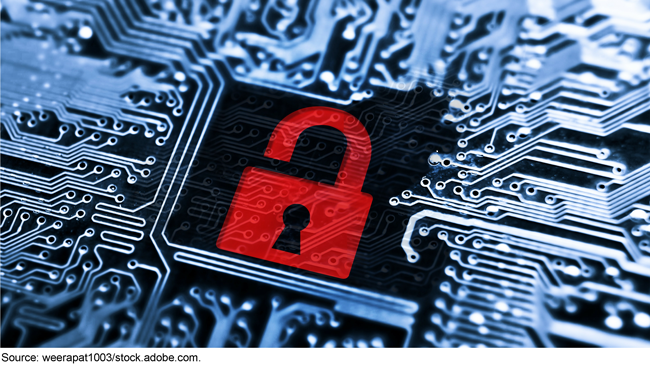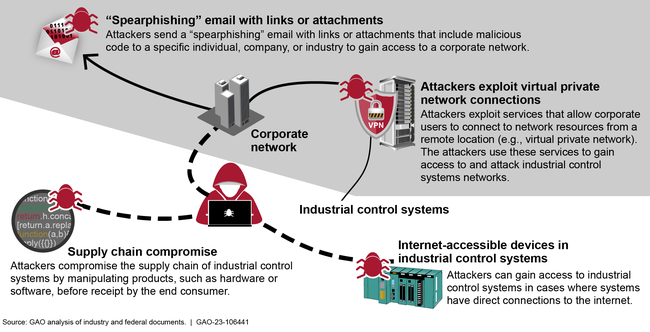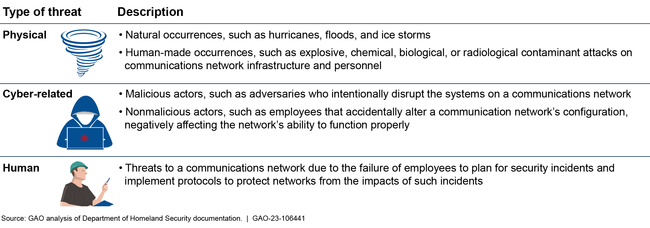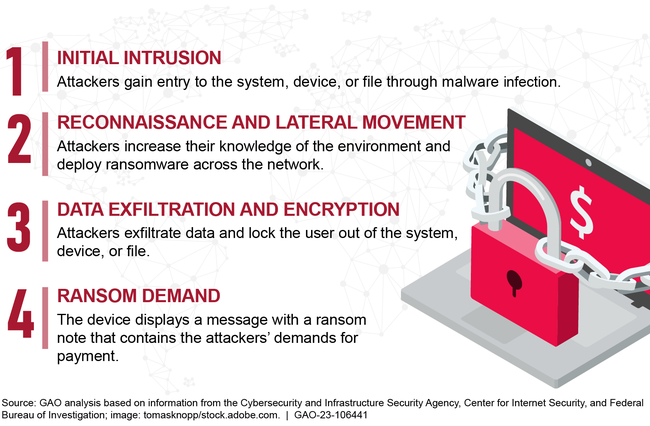Cybersecurity High-Risk Series: Challenges in Protecting Cyber Critical Infrastructure
Fast Facts
Federal systems are vulnerable to cyberattacks. Our High Risk report identified 10 critical actions for addressing federal cybersecurity challenges.
In this report, the third in a series of four, we cover the action related to protecting cyber critical infrastructure—specifically, strengthening the federal role in cybersecurity for critical infrastructure. For example, the Department of Energy needs to address cybersecurity risks to the U.S. power grid.
We've made 106 public recommendations in this area since 2010. Nearly 57% of those recommendations had not been implemented as of December 2022.

Highlights
Overview
We have made 106 recommendations in public reports since 2010 with respect to protecting cyber critical infrastructure. Until these are fully implemented, federal agencies will be more limited in their ability to protect private and sensitive data entrusted to them. For more information on this report, visit https://www.gao.gov/cybersecurity.
Strengthen the Federal Role in Protecting Cyber Critical Infrastructure
The U.S. grid’s distribution systems—which carry electricity from transmission systems to consumers and are regulated primarily by states—are increasingly at risk from cyberattacks. Distribution systems are growing more vulnerable, in part because of industrial control systems’ increasing connectivity. As a result, threat actors can use multiple techniques to access those systems and potentially disrupt operations.
Examples of Techniques for Gaining Initial Access to Industrial Control Systems

We reported in March 2021 that DOE, as the lead federal agency for the energy sector, developed plans to help combat these threats and implement the national cybersecurity strategy for the grid. However, DOE’s plans do not address distribution systems’ vulnerabilities related to supply chains. By not having plans that address the improvement to grid distribution systems’ cybersecurity, DOE’s plans will likely be of limited use in prioritizing federal support to states and industry.
➢ We recommended that, in developing plans to implement the national cybersecurity strategy for the grid, DOE coordinate with DHS, states, and industry to more fully address risks to the grid’s distribution systems from cyberattacks.
The communications sector is an integral component of the U.S. economy and faces serious physical, cyber-related, and human threats that could affect the operations of local, regional, and national level networks, according to CISA and sector stakeholders. In addition to managing federal coordination during incidents impacting the communications sector, CISA shares information with sector stakeholders to enhance their cybersecurity and improve interoperability, situational awareness, and preparedness for responding to and managing incidents.
Examples of Potential Security Threats to the Communications Sector

In November 2021, we reported that CISA had not assessed the effectiveness of its programs and services supporting the security and resilience of the communications sector. By completing such an assessment, CISA would be better positioned to determine which programs and services are most useful or relevant in supporting the sector’s security and resilience. We also reported that CISA had not updated its 2015 Communications Sector-Specific Plan. Developing and issuing a revised plan would help CISA to address emerging threats and risks to the communications sector.
➢ We recommended that CISA assess the effectiveness of its programs and services to support the communications sector and, in coordination with public and private communications sector stakeholders, produce a revised Communications Sector-Specific Plan.
Ransomware is a form of malicious software that threat actors use in a multistage attack to encrypt files on a device and render data and systems unusable. These threat actors then demand ransom payments in exchange for restoring access to the locked data and systems.
Four Stages of a Common Ransomware Attack

In September 2022, we reported that CISA, FBI, and Secret Service provide assistance in preventing and responding to ransomware attacks on tribal, state, local, and territorial government organizations. However, the agencies could improve their efforts by fully addressing six of seven key practices for interagency collaboration in their ransomware assistance to state, local, tribal, and territorial governments. For instance, existing interagency collaboration on ransomware assistance to tribal, state, local, and territorial governments was informal and lacked detailed procedures.
➢ We recommended that DHS and the Department of Justice address identified challenges and incorporate key collaboration practices in delivering services to state, local, tribal, and territorial governments.
For more information about this Snapshot, contact: Marisol Cruz Cain, Director, Information Technology & Cybersecurity, cruzcainm@gao.gov, (202) 512-5017.
